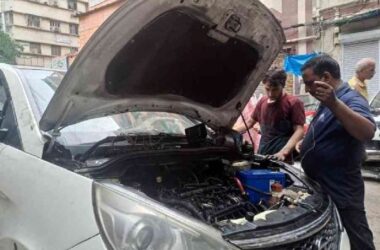A vital part of your car’s engine, the serpentine belt drives a number of parts that are necessary for the vehicle to function. You can maintain the functionality of your car and avoid problems by being aware of its purpose, wear indicators, and replacement requirements.
A Serpentine Belt: What Is It?
An engine’s serpentine belt is a long, winding belt that winds around different pulleys. It powers necessary parts like the water pump, air conditioning compressor, power steering pump, and alternator and is driven by the crankshaft pulley. It might also power other parts like the supercharger or radiator fan in some cars.
The Significance of Serpentine Belts
For these parts to operate as intended, the serpentine belt is essential. For example, the water pump keeps the engine temperature stable, the power steering pump helps with steering, and the alternator drives electrical systems and charges the battery. These systems may malfunction due to a broken serpentine belt, which could result in the engine overheating, the battery dying, or problematic steering. A high-pitched screeching noise, particularly during engine starter or acceleration, is one of the most typical indicators that a serpentine belt is wearing. This suggests that the pulleys are being slid by the belt.
Guidelines for Replacement
The manufacturer suggests: The recommended replacement period by the manufacturer can be found in the owner’s manual of your car. Serpentine belt replacement is generally advised every 60,000 to 100,000 miles, however the exact interval may differ based on the brand and model of your car.
Check the belt for wear indicators on a regular basis. Regardless of the mileage, replace the belt if you observe any cracks, fraying, or excessive wear. Otherwise you can also hire the Auto Repair in Oak Grove, MO services for such works.
Whenever you hear strange noises or during routine maintenance, have a professional technician evaluate your serpentine belt if you are doubtful about its condition.
Do-It-Yourself Replacement Advice
Make sure the engine is cold, unplug the battery, and gather the required tools.
- To remove the old belt and relieve tension from the belt tensioner, use a wrench or a belt tensioner tool.
- Use the routing diagram underneath the engine compartment or the schematic in your owner’s handbook to route the new belt.
- To make sure the belt is put correctly, check its alignment on each pulley after installation.
Conclusion
A vital part of your car’s engine that powers several vital systems is the serpentine belt. It is possible to save money on repairs and preserve the functionality of your car by being aware of its function, wear indicators, and replacement guidelines. To guarantee that your car operates smoothly and dependably, routine inspections and periodic serpentine belt replacements are essential. You can guarantee that your serpentine belt will continue to operate normally and keep your automobile running smoothly for many miles by according to these rules.

















